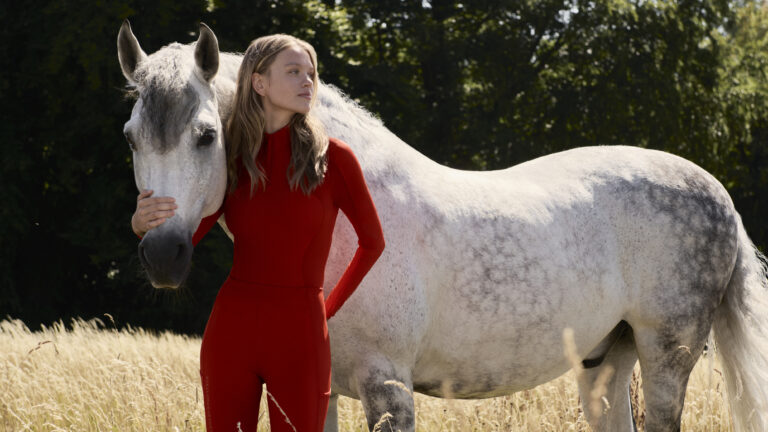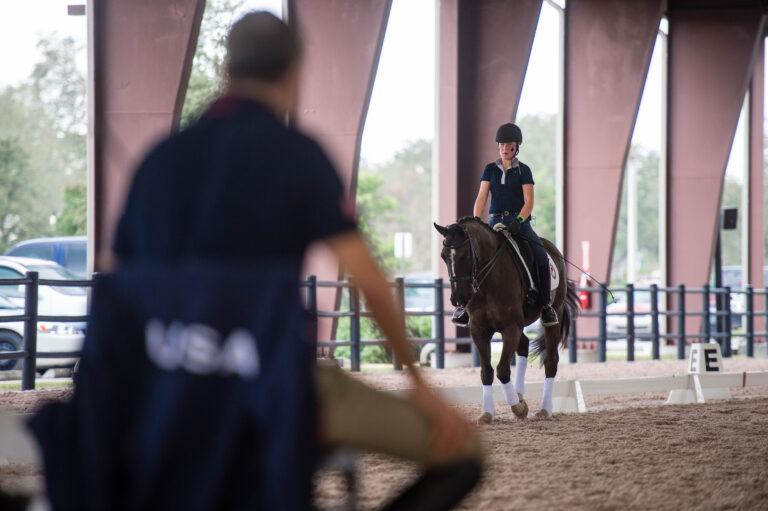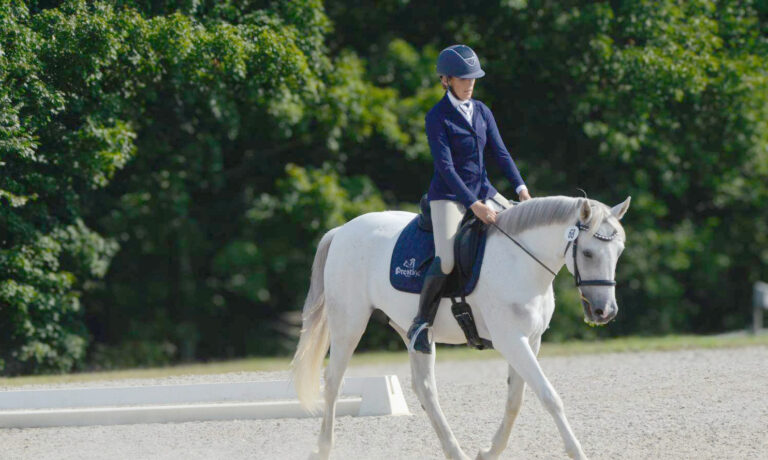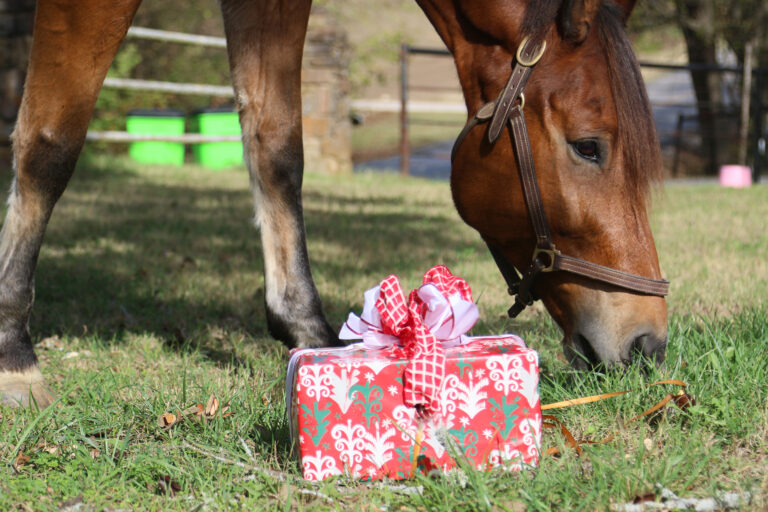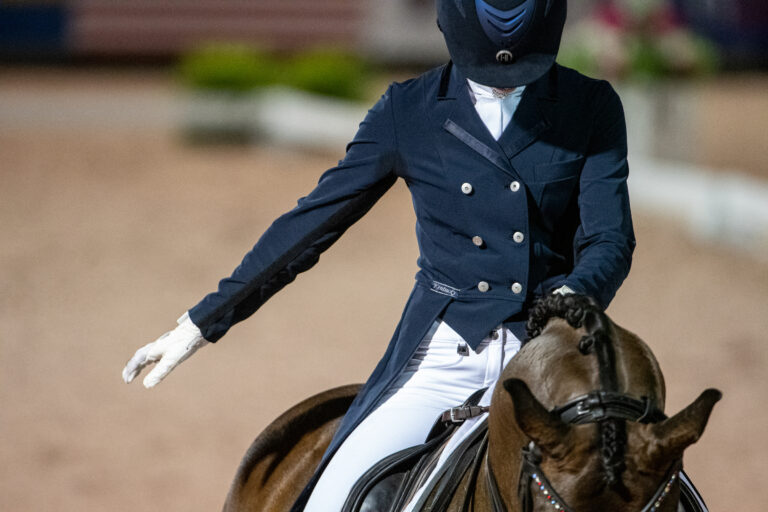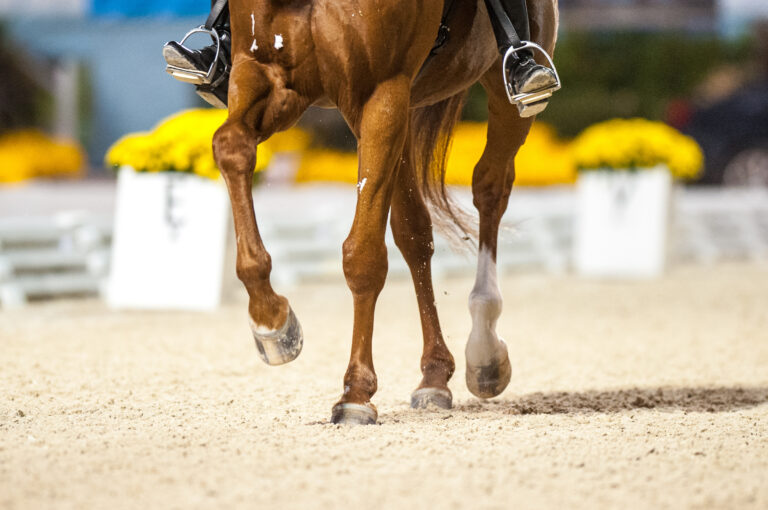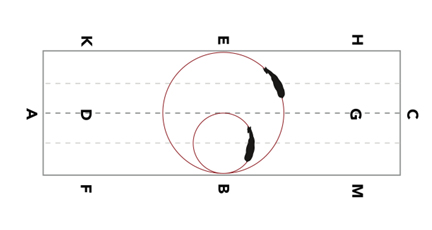
When visiting the south of Spain, especially in the summer months, most visitors are first impressed by the heat and the sere landscape. But look deeper and you will discover life behind the olive trees and under the shade of the oaks and cypresses. Behind ancient stucco walls you’ll find dancing and music, wineries and sherry distilleries, splashing fountains and stunning horses.
I had the good fortune to see all of these things on a trip through the south of Spain. Three things stand out about that visit: the horses, the pageantry and the flamenco. The heritage of each is woven into the fabric of life of the city of Jerez de la Frontera in the Andalusia region.

The Royal Andalusian School of Equestrian Art
In 1973, the King of Spain awarded the Caballo de Oro (Golden Horse) trophy to Don Alvaro Domecq in Jerez de la Frontera in recognition of a lifetime of service to and effort on behalf of the horses of Spain. In gratitude, the very first show of “How the Andalusian Horses Dance” was performed. This was the foundation that would create the Real Escuela Andaluza del Arte Ecuestre (Royal Andalusian School of Equestrian Art).
I first saw the Royal Andalusian School perform in Paris in 2007 at the inaugural performance of the Écoles d’Art Équestre (Four Classical Schools) in collaboration with Europe’s other great classical dressage schools—the Spanish Riding School of Vienna, Austria; the Cadre Noir of the French National Riding School in Saumur, France; and Lisbon’s Portuguese School of Equestrian Art in Queluz, Portugal.
The entire show was enchanting, but I recall clearly the spirited nature of the Spanish performance in contrast to the stately and elegant performances of the other schools. The show in Jerez de la Frontera had elements of this same character. While I didn’t see performances by stars such as Spain’s dressage Olympians Raphael Soto and Juan Muñoz Diaz as I had in Paris, the horses were beautifully presented and the sellout crowd was enthusiastic and appreciative. I saw individual dressage performances, pairs and quadrilles, airs above the ground, four-in-hand carriages and racing carts as well as a demonstration of the garrocha (the pole that is used by the Spanish Doma Vaquera—or working—riders) followed by a spectacular pinwheel finale.
The riding hall is housed in the Recreo de las CadenasPalace, a beautiful 18th-century palace in the center of a park dedicated to the preservation and training of the Pura Raza Español (P.R.E.), the name given to this area’s pure Spanish horse breed. (The term “Andalusian” is often incorrectly used to refer to the P.R.E.).
Horses from Europe’s Iberian Peninsula (the Lusitano and the P.R.E.) have been the mounts of choice for cavalry officers throughout Europe, prized for their courage, athleticism and cooperation. Spain’s King Phillip II (1527–1598) paid particular attention to improving the quality of the Spanish horse, and thus the breed was refined and strengthened. Extremely popular with the royal courts of Europe, Iberian horses are featured in many of the paintings of mounted royals from the 16th century on.
In addition to the site of the Spanish Royal Andalusian School performances, the Recreo de las Cadenas Palace is home to the Museum of Equestrian Art and the Driving Museum. Each is worth a visit for its stunning craftsmanship.
The Cartujan P.R.E.
The final horse-related highlight of my trip to southern Spain was a visit to Yeguada de la Cartuja stud farm, dedicated to preserving the Cartujan P.R.E. Since its founding in the late 15th century, the monastery of Cartuja established a line of breeding stock that would become one of the most important of the Spanish pureblood horse, perhaps of all horses. Through royal decree and protection, this fabulous lineage was developed during Spain’s golden age. Today, we see Carthusian horses in the bloodlines of many breeds, including the Lipizzan, Kladruber, Russian Orlov Trotter and Holsteiner.


Upheaval in the church and state in the early 19th century forced the bloodlines into private hands, where the Yeguada de la Cartuja has remained. Today the enchanting facility offers visitors a glimpse into the life of the Cartujan P.R.E. and the people who care for these majestic animals.
I had time to wander along the stable aisles to see the stallions and riding horses and to the pastures and paddocks to see mares, babies, yearlings and young horses. Their handlers were all in traditional dress (even in the heat of southern Spain) and the whole effect was charming without being cartoonish.
Later I gathered in a spectacular glass-enclosed picadero (arena) to watch more quadrilles, carts and carriages, garrocha and dressage demonstrations. Then came a spectacular exhibition with two caballeros and a cobra (or lot) of mares. One man in the center of a line of mares, each attached to the others in two sets of six, moved them left to right, in and out of serpentines and pinwheels, alternating between a full gallop and a full stop. It was amazing!
But the highlight was when the mares were detached from each other and left to wander at one end of the arena while at the other end, the gate opened and in charged all their babies. They were eager to find their mommies—calls and squeals filled the air as they ran back and forth sniffing and touching noses till they found the right mom. The whole crowd exhaled a collective, “Awwww” during the magical scene.
From Horses to Flamenco
Even the most die-hard equestrian needs a little nonhorse-related diversion from time to time. Should you ever travel to Jerez, be sure to try the local sherry, a fortified wine made from white grapes grown nearby, at one of the area’s many bodegas, including my favorite, Pedro Domecq.

The grapevines of Jerez are believed to have been created from vines brought to the area in the 10th century B.C. Later, the Greeks brought knowledge of how to produce arrope—a dark syrup made from grapes that is used to sweeten this wine.
You can’t leave Jerez without experiencing flamenco, the area’s traditional music and dance. Ask around town for a local spot to enjoy some flamenco, which will reinforce the impressions of pride, spirit and brilliance that are imbued in the culture of the region.
Walking the streets of Jerez, you can pass local schools, where several generations are learning the finer points of the art, and then turn the corner to find a spontaneous performance in a courtyard or taberna.
The museum at the Andalusian Centre of Flamenco houses a collection of artifacts, including musical instruments, costumes, promotional posters, sheet music
and postcards, and the center’s library helps educate the public about flamenco and serves as a resource
for scholars.
No matter where you turn or which way you walk in Jerez de la Frontera, you will have authentic, resonant, joyful Spain at your feet.


